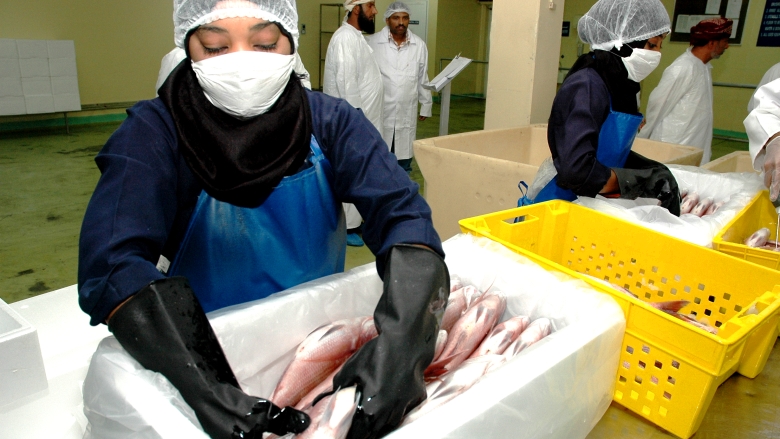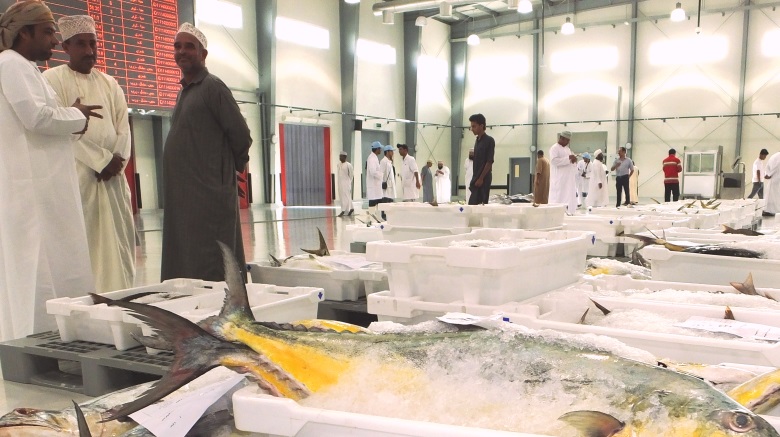What constrains Oman’s income from fisheries at the moment?
Banu Setlur: There are two things: currently, Oman only looks at the harvesting sector, the fishing itself, which contributed 0.7% to its GDP in 2015. But what we are saying is that it should include the entire value chain—from harvesting to processing to logistics, to wholesale, marketing and retail. If it were to do this that would double the current contribution fisheries make to Oman’s economy. Oman’s development would also benefit from greater attention to markets, domestic and international; from high value fisheries, instead of just the volume of fish landed; and from value added, which would help create new jobs. Today’s income from fisheries is low and unsustainable; the amount of effort that goes into fisheries is high though, resulting in over-exploited fisheries as well as in reduced amounts of fish being landed, and in declining productivity. To break this vicious cycle Oman, like other successful fishing economies, needs to manage its fisheries in a manner that will generate greater levels of income—levels that can be sustained over time.
Is Oman looking into ways of expanding its fisheries sector?
Banu Setlur: When it comes to fisheries, Oman compares itself to Norway, and wanted us to see how it could learn from it. Oman is very open to learning from other countries, whether developing or developed; it is very open to hearing what the best practices out there are. It’s very interesting because, although very different climates, Oman and Norway have similarities, like a very long coastline. We looked at Norway and took away things, such as how Oman’s fishing sector might—ever-so-gradually—move away from unsustainable management practices and its current dependence on the government. For this to happen, the government would have to earn the trust of stakeholders at various levels, and it would also have to give them increasing responsibility and accountability in the management of its coastal fisheries.
Just how many Omanis depend on fishing for a living?
Banu Setlur: Approximately 45,000 to 50,000 individual livelihoods depend on fisheries or related activities. Omanis know though is that, if well managed, fisheries can be a sustainable, long-term resource that can contribute to Oman’s long-term vision of economic development and diversification. From our study, though, we realized only a small percentage of Omanis are full-time fishermen. A lot of them are part-time or recreational fishers.


